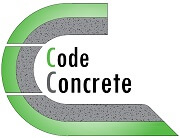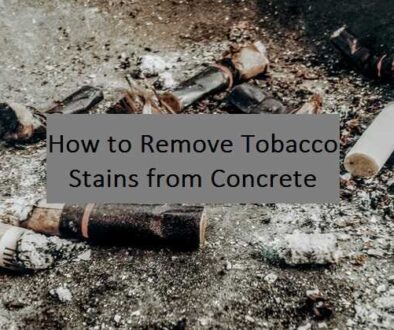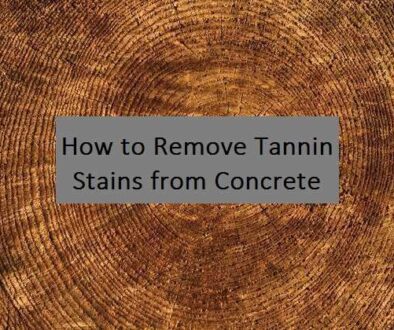How to Remove Chewing Gum from Concrete

Last updated on January 19th, 2023
One of the common cleaning issues in many urban environments is chewing gums and gum stains on concrete floors. In fact, chewing gums can stick to almost anything, even to concrete, and may require some elbow grease to remove. Also, even after removal, some gums can leave stains or residue which require additional cleaning.
However, the toughness of the gum’s stickiness and staining, and the effectiveness of the cleaning method(s) depend on several factors. These mainly include the chemical composition of the gum, the properties of concrete, and age.
Just imagine how aesthetically unappealing your driveway, sidewalk, or walkway can be with gum or gum stains, and how annoying would it be stepping on a chewing gum.

In this article, we will provide the best proven methods on how to remove chewing gum from concrete. These cover minor instances on private properties to larger issues in public or commercial properties.
But why do chewing gums stick to concrete, and what causes staining?
Chewing gums can easily stick to bare concrete surfaces since they contain polymers, resins, and softeners. In addition, they can also leave a stain since they contain pigments, which can penetrate the surface.
Methods for gum removal from concrete
There are many different methods on how to remove chewing gum from concrete, however, we will discuss the three most effective and proven ones.
Method #1: How to remove chewing gum from concrete surfaces with this easy DIY method

The first method is most suitable for small spots, and is an easy “DIY” method for home owners.
Things you will need
- Ice cubes / freeze spray.
- Putty knife.
- Cat litter / fine absorptive powder.
- Safety gear.
- Methylated spirits / alcohol.
- Stiff bristle / wire brush.
- Hot water.
- Soap / tri-sodium phosphate (TSP) / scouring compound.
- Clean water.
Notes
- Denatured Alcohol is also known as Methylated Spirit.
Appearance: Colorless liquid.
Availability: It is generally available at pharmaceutical supply centers and sometimes at hardware stores.
Hazards: This product is toxic and flammable. - Trisodium Phosphate is also known as Sodium Orthophosphate, TSP, and Phosphate of Soda.
Appearance: Crystalline, odorless, white powder.
Availability: It is available at supermarkets and hardware stores.
Hazards: This compound is corrosive to flesh.
Steps
- Apply ice cubes or freeze spray to the gum in order to solidify it.
- Use a putty knife to chip the brittle gum off the surface.
- Put on your safety gear.
- Prepare a poultice paste from cat litter and methylated spirits or alcohol.
- Apply the poultice paste to the spot.
- After the poultice dries, use a stiff bristle or a wire brush to remove the residue.
- Wash the surface with hot water and soap, TSP, or scouring compound.
- And finally, flush with clean water.
Explanation
This method starts first by lowering the temperature of the chewing gum, which reduces its elasticity and stickiness, making it easier remove. All you need in this step is a couple of ice cubes, or a freeze spray which comes in aerosol cans. Then, using a putty knife or utility knife, simply chip off the brittle gum. Sometimes, these two steps are enough for the full removal of the gum, especially if it is new.

However, for old and walked-on gums, you will also have to deal with the residue and stain. Thereby, one of the best solutions is to apply a poultice right on the spot. But before you get into the preparation of the poultice, wear your protective gear; safety always comes first. You need to mix a fine absorptive powder or cat litter with methylated spirits to form a paste.
Note: Methylated spirits, or denatured alcohol, is banned in some states; you can use alcohol instead for the poultice paste.
Then, apply this paste with a thickness of about 1/4 of an inch (6mm), covering an area slightly larger than that of the affected spot. Afterwards, when the poultice dries, in about 30 minutes to an hour, scrape it off with a stiff bristle or wire brush. In fact, this step removes the residue and absorbs most of the gum pigments out of the surface. Then, you need to wash the surface with hot water and soap, TSP, or scouring compound, using a circular motion. Hot water is the key to the successful removal of the stain, so do not substitute it with cold water. Finally, flush the surface thoroughly with clean water.
Method #2: How to remove chewing gum from concrete using a solvent or special chemicals

This method is easy to perform, however it includes the use of solvents or special chemicals which require care with handling, using, cleaning, and disposal.
Things you will need
- Putty knife.
- Safety gear.
- Amyl acetate / carbon tetrachloride / special proprietary solvent.
- Stiff bristle.
- Water.
Notes
- Amyl Acetate also known as Banana Oil.
Appearance: Colorless liquid.
Availability: It is a solvent available at chemical supply centers and cloth cleaning stores.
Hazards: Toxic. - Carbon Tetrachloride is also known as Perchloromethane and tetrachloromethane.
Appearance: Clear colorless liquid.
Availability: It is a solvent available at pharmacies, cleaning supply centers, and paint stores.
Hazards: Toxic.
Steps
- Scrape as much gum as possible.
- Apply amyl acetate, carbon tetrachloride, or a special proprietary solvent to the spots.
- Use a stiff bristle to scrape off the residue.
- Thoroughly rinse the surface with clean water.
Explanation
First, use a putty knife to scrape as much chewing gum as possible. Then, wear your safety gear before working with any of the solvents or chemicals. Afterwards, apply amyl acetate, carbon tetrachloride, or the proprietary solvent right on the spots, and scrape off with a stiff bristle brush. And finally, rinse thoroughly with clean water. Besides, it is important to note that when using a special proprietary solvent to remove chewing gums from concrete, follow the manufacturer’s instructions.
Method #3: How to remove shewing gum from concrete using high temperature dry steam cleaning

This method is more suitable for larger areas of stains, but is also applicable for minor spots if you have the tools. It mainly includes the use of a high temperature dry steam cleaner to do the job. In fact, this is one of the most effective gum removal methods from concrete surfaces, especially for old and walked-on gums, which typically leave a dark spot on the surface.
In general, it is best to hire a professional contractor for this job, who has the necessary equipment and experience. Nevertheless, you can rent a high temperature dry steam cleaner if you want to do the job yourself.
Things you will need
- High temperature steam cleaner.
- Water.
- Special detergent.
- Safety gear.
Explanation
This method is very effective for gum removal mainly due to its high temperature, not pressure. In fact, the high temperature dry steam cleaner uses a small amount of water to produce a steam with temperatures exceeding 300 degrees Fahrenheit or 150 degrees Celsius. In addition, a special detergent can be added to the steam cleaner, which further boosts the effectiveness of the process.
Besides, it is important to note that some contractors use other methods including hot water pressure washing. However, the temperature remains the key factor here, and is far more important than pressure. But comparing a high temperature dry steam cleaning to a hot water pressure washing, the former is generally more efficient and “friendlier”. Whereas, the latter can be messier, and can cause surface problems especially with excessively high pressure, improper technique, and wrong nozzle.




